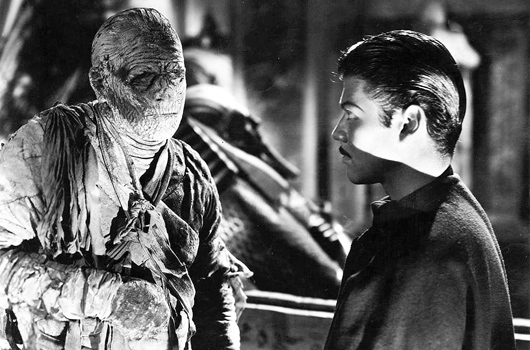
Mummy’s Tomb, The (Universal 1942)
Of all Universal’s classic monsters, the Mummy was surely the one treated with the least respect, being mercilessly put out to graft in its third outing, The Mummy’s Tomb, simply to earn the studio money. This seems a pity after the remarkable beginnings endowed upon the character in Karl Freund’s exotic and mysterious original, The Mummy (1932), in which Boris Karloff brought genuine pathos to the role.
The Mummy’s Tomb was Lon Chaney Jr’s first incarnation as the incarcerated Kharis and, given the oftentimes appalling scripting by Griffin Jay and Henry Sucher, and lacklustre direction by Harold Young, it’s easy to understand his displeasure at both the role and the movie. Swathed in yards of bandages, he was given little more to do than lunge through the scenes, reduced to an ancient Egyptian killing machine, affording him little opportunity to stretch his talents. Jack Pierce’s make-up took into account the fiery demise of Tom Tyler’s Kharis in The Mummy’s Hand (1940), suitably depriving the evil embalmee of his right eye and the fingers on his right hand, with bandages appropriately blackened.
Kharis (Lon Chaney Jr) bears off Isobel (Elyse Knox) in The Mummy’s Tomb (Universal 1942)
Set some thirty years after the close of the previous film, The Mummy’s Tomb begins with an artificially-aged Dick Foran reprising his role as Stephen Banning as he regales his guests, including son John (John Hubbard) and prospective daughter-in-law Isobel (Elyse Knox) with details of his ill-fated adventures, lazily illustrated with some twelve minutes of flashbacks from The Mummy’s Hand. At the same time, we have a super-aged George Zucco as Andoheb, providing new recruit Mehemet Bey (Turhan Bey) with care instructions for Kharis; three tana leaves to keep him alive, nine to animate him ready for the multiple murder of all members of the Banning family and expedition.
Accepting the cosy little job of cemetery keeper in Mapleton, a rural retreat in smalltown Massachusetts, Mehemet transports the mummy ready for his homicidal rampage. The killings are plentiful and nasty, not least because the majority of them are carried out on defenceless oldies including Stephen Banning, his devoted sister Jane (Mary Gordon) and original team member Babe Hanson (Wallace Ford), not to mention the accidental killing of Banning caretaker Jim (Paul E Burns).
A publicity still signed by Chaney for The Mummy’s Tomb (Universal 1942)
Interrupted in his nefarious night-time deeds, Mehemet takes a fancy to Isobel, dispatching Kharis to abduct her that she may join him in eternal life. Tracked by a torch-bearing mob of angry locals, he is shot by the sheriff and Kharis is pursued, girl in arms, to the Banning mansion. In an impressive finale, the house is set alight amid Banning’s rescue of his fiancee, and the mummy is left to perish in the flames.
Sadly, so little attention was paid to The Mummy’s Tomb that its handful of glaring plot goofs and inconsistencies in continuity are hard to overlook by even the most devout fans. It seems unbelievable that nobody – including Ford – seemed to notice that Babe’s surname had been changed from Jenson to Hanson. Likewise, the caretaker’s demise is attributed directly to the touch of Kharis on his throat, whereas in actual fact the terrified groundsman collapses in apoplexy at the mere sight of the gauze-clad ghoul, and despite being riddled with Wallace Ford’s bullets and pitching down countless stone steps at the end of the previous movie, dear old Andoheb has escaped with nothing more than a shattered arm.
It is also never made clear what he has been doing in the intervening three decades, and what suddenly prompts him to send his protege and pet mummy out to New England to wreak revenge.
Jack Pierce’s make-up took into account the demise of Kharis in the previous film, but Chaney still hated wearing it for The Mummy’s Tomb (Universal 1942)
Even Hans Salter’s scores are recycled from The Wolf Man (1941) and The Ghost of Frankenstein (1942), together with infusions from Frank Skinner’s themes for Son of Frankenstein (1939). Along with liberally reused Universal stock footage and The Mummy’s Hand flashback sequences, it’s easy to feel a little cheated here and there. But it’s all familiar stuff, and grist to the mill of the classic monsters buff.
The dramatic finale on the balcony of the burning Banning mansion in The Mummy’s Tomb (Universal 1942)
Notwithstanding all its shortcomings, diehard fans have plenty to enjoy in this high-body-count precursor to the modern-day slasher movie, and ultimately The Mummy’s Tomb is still viewed with a degree of affection today.





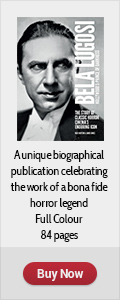
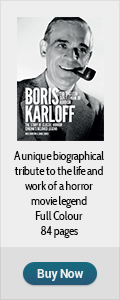
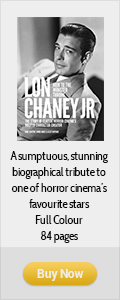


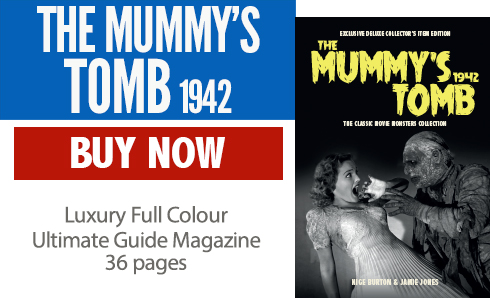
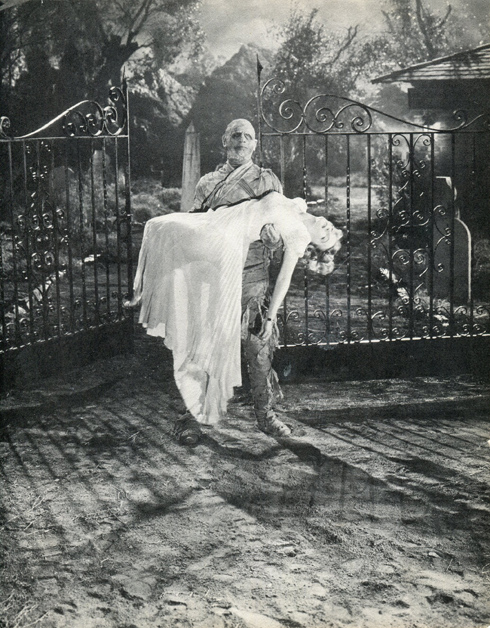
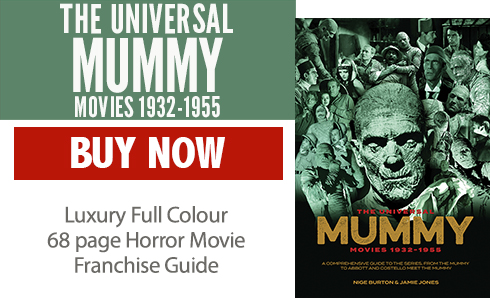
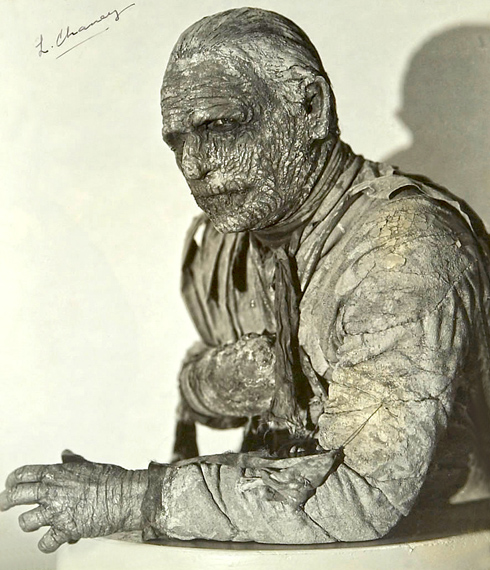


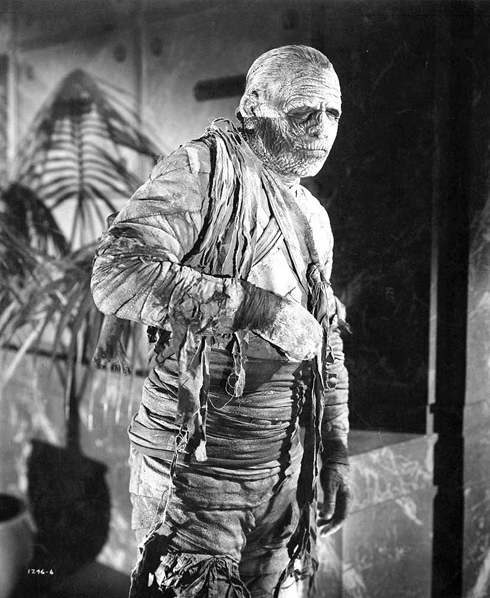
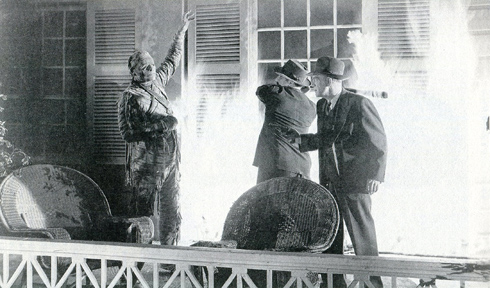
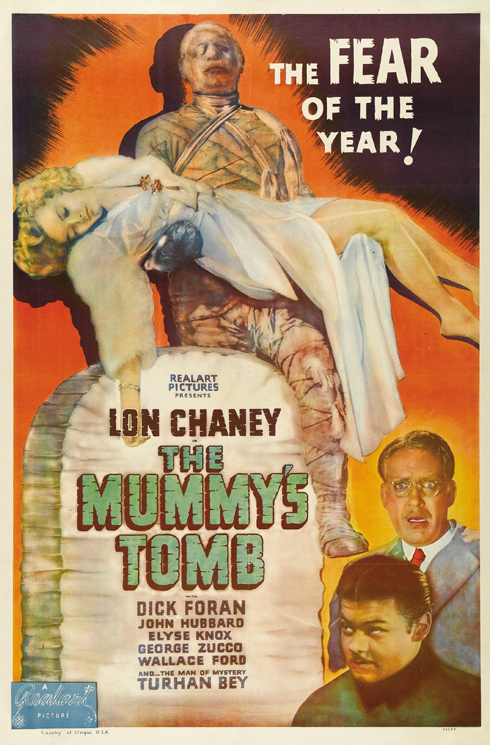
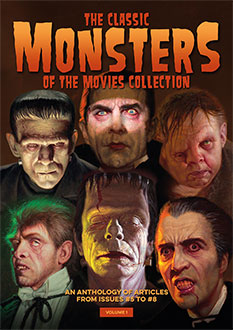
Leave a comment